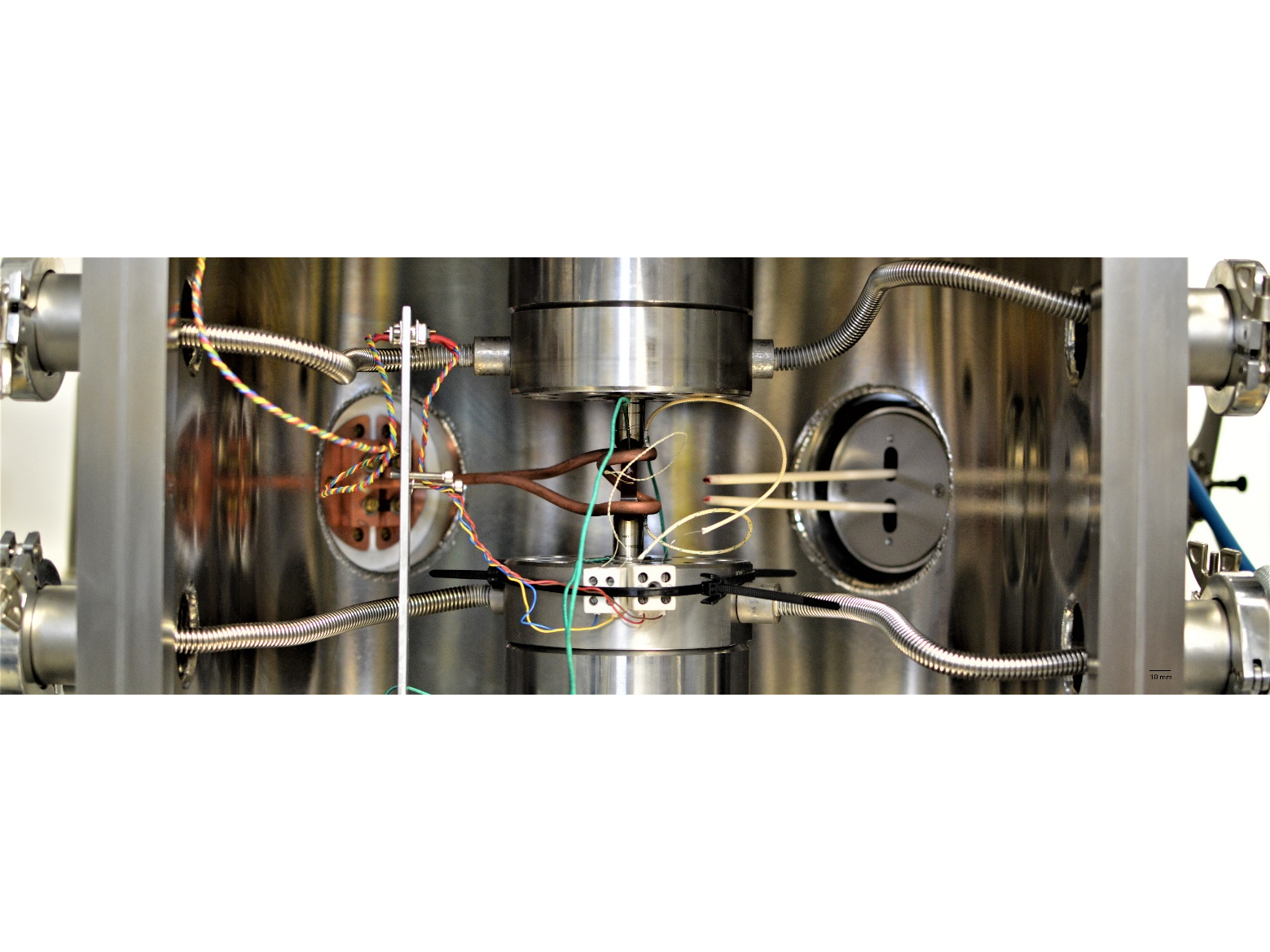Test bench for high temperature characterization of materials under high vacuum
The ambient atmosphere plays an increasing part in the damage behavior of metallic materials as temperature rises. In fatigue damage, in particular, oxygen plays a significant part. The formation of oxides and oxygen diffusion at the tip of the crack cause acceleration of the crack propagation that increases with temperature and consequently leads to a reduction in lifetime. Some alloys, most of which are resistant to high temperature, are even subject to oxygen related embrittlement under certain load conditions, as with the SAGBO effect. However, there are indications that the oxygen atmosphere slows down fatigue as a result of what is known as the oxygen induced crack closure effect, particularly in the threshold range. In technical application, on the other hand, there are also areas that are not exposed to the ambient atmosphere, such as internal defects. In this case, the supporting effect of crack closure would diminish and consequently the threshold values and fatigue strengths determined in laboratory air cannot be applied.
A vacuum chamber has been developed at the Fraunhofer IWM to research the effect of the ambient atmosphere and its influence on damage. It can be used to carry out all high temperature tests, such as LCF, TMF, HCF and crack propagation tests under high vacuum. As an option, the chamber can also be flushed with inert gas. Comparative experiments conducted under a vacuum can finally be used to separate the damage mechanisms triggered by creep and environment. As a result, mechanism-based models that take account of environment related damage can for the first time be reliably validated .
Back to Assessment of Materials and Lifetime Concepts Highlights
 Fraunhofer Institute for Mechanics of Materials IWM
Fraunhofer Institute for Mechanics of Materials IWM